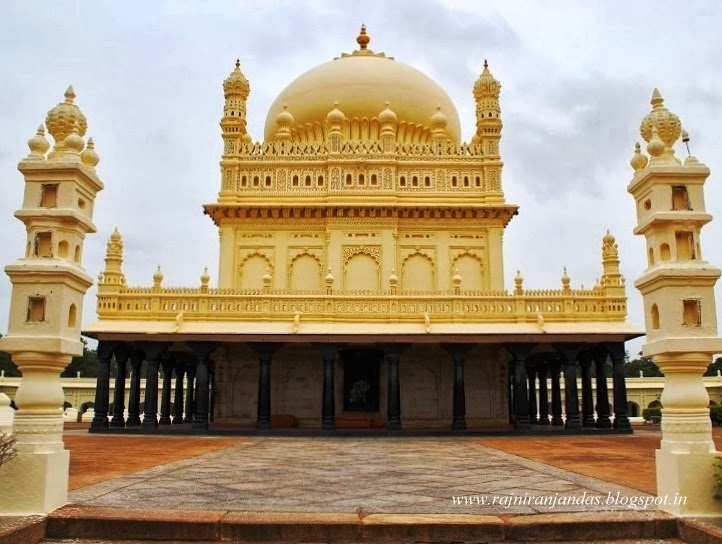
Surrounded by river Cauvery , the the river island of Srirangapatna came into prominence after Tipu Sultan, one of the fiercest rulers made it his capital. Situated close to the cultural city of Mysore, this small island exudes the languorous character of a town that still breathes the fame and valour of its erstwhile ruler. The reminiscences of the empire are still evident and most of it are well maintained by the archaeological survey of India. State highway that connects Bengaluru and Mysore cuts the island into two . While travelling from Bengaluru, the fort enclosure and Ranganatha swamy temple is on the right, while Daria Daulat Bagh, Gumbaz and sangam is on the road that leads to the left.
Started early from Bengaluru and had a short stop at Maddur for breakfast before reaching Srirangapatna. I took a right near the bus stand which led me through the narrow road lined with street vendors and went past the Bangalore gate into the heart of this small river island. The island does have a few other entrance gates, namely Mysore gate, Delhi gate, Elephant gate and Water gate. The gates were the entrances into the fort from different sides during the times of Tipu. The first structure that I encountered after entering the fort walls was Jama Masjid, soaked in turmeric yellow. I rode past the masjid and Narasimha temple, and the straight road took me to Ranganatha swamy temple. The road is lined with vendors selling temple paraphernalia, food stalls and horses which are lined up to lure the visitors for a ride.The tall gopuram (entrance tower), though under renovation, looked quite attractive with its wonderful architecture. Built with a beautiful blend of both Hoysala and Vijayanagara architecture, the temple has Vishnu in reclining position as its main deity. The inside of the temple also has some wonderful architectural display on its pillars, ceilings, walls and in its courtyard. The temple teemed with both pilgrims and tourists and I made my way out after paying homage to the lord.
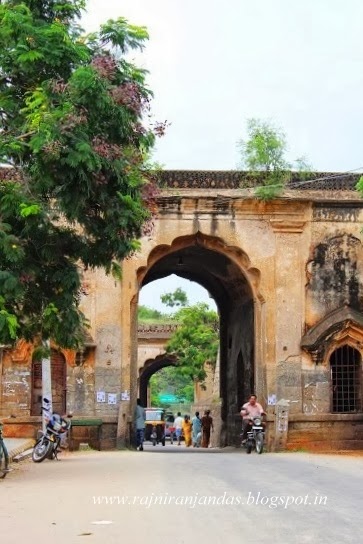 |
| Bangalore gate |
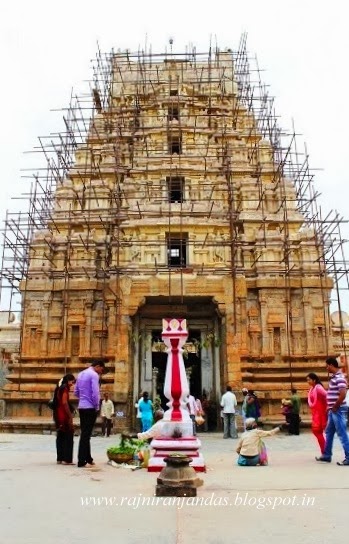 |
| Ranganathaswamy temple |
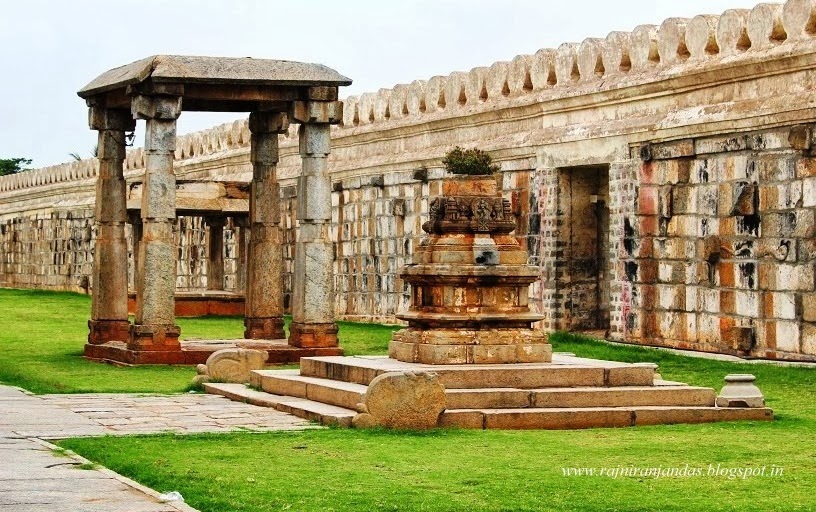
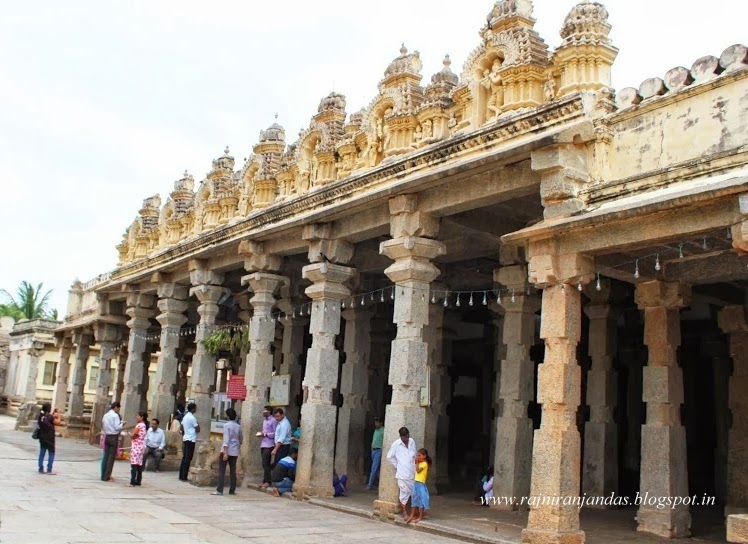
The places of interest have been marked with directions at most crossroads, which helps the tourists. I began with the ruins of Tipu Sultan's palace, also known as Lal mahal, less than 200 meters from the temple. Though only the base structure and a few broken walls remain, the palace was once well known for its splendid designs, rooms and halls of magnificent proportions and underground drains. The palace was dismantled during Colonel Wellesley's rule in early 19th century. The gate was closed when I visited and I peered from outside to have a glimpse of the ruins.
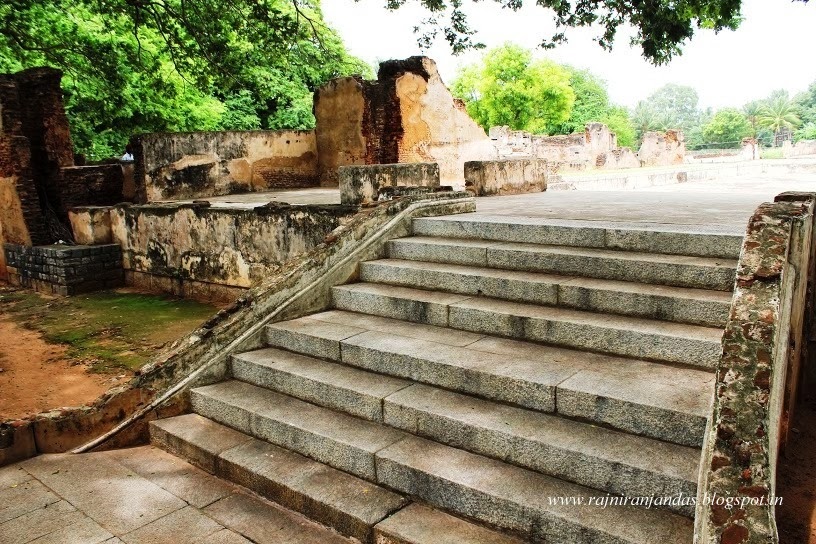 |
| Lal mahal |
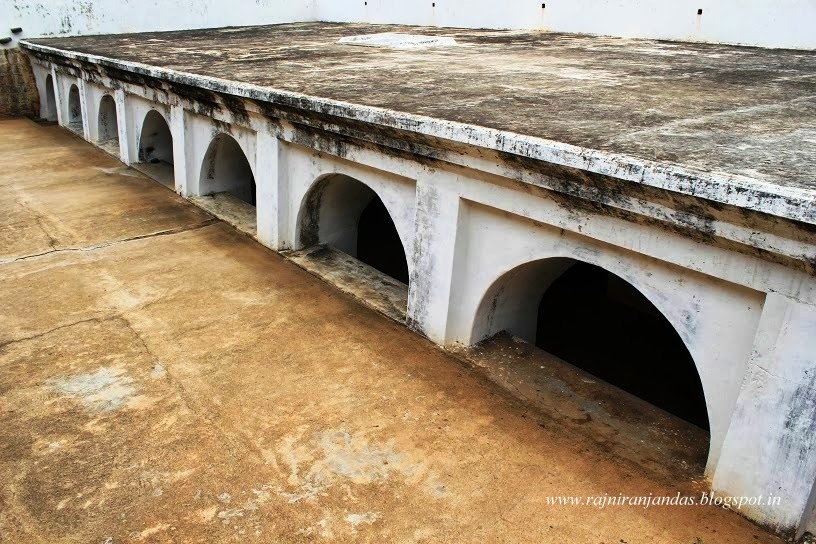 |
| Bailey's dungeon |
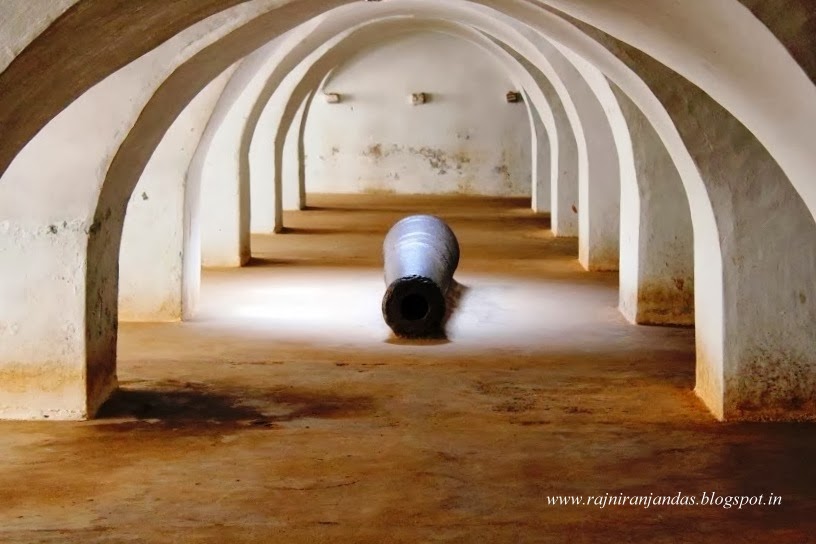
As I rode on, the road to the Obelisk disappeared suddenly and all that I could see was a narrow trail which led to a secluded part of the fort. Greenery had overgrown onto the fort boundaries and the walls could barely be seen. There were a couple of shepherds who were relaxing as their sheep enjoyed the pasture. The trail that led to the obelisk was across an undulating landscape. I trudged to reach the top where the obelisk is situated and there wasn't another soul around. Situated in the western corner of the island, next to the fort walls, the obelisk was erected in memory of the British soldiers who died during the siege of Srirangapatna. Since it is located at a corner of the fort, the views from the obelisk are beautiful. I walked back to my bike and then went past the dilapidated Delhi gate and Water gate to a few bathing ghats. These gates have narrow paths which lead to over grown bushy trails which ends at the bank of the river. I rode further past the small tea stalls, neatly painted houses and groups of chatting locals, in search of more history. The island definitely has a quaint charm of its own. There is a memorial erected at the place where Tipu Sulthan's body was found during the fourth Anglo-Mysore war in 1799. Another dungeon that I visited was Thomas Inmam's dungeon, which was used by Tipu Sultan and Haider Ali to imprison Maratha invaders and other Indian prisoners.
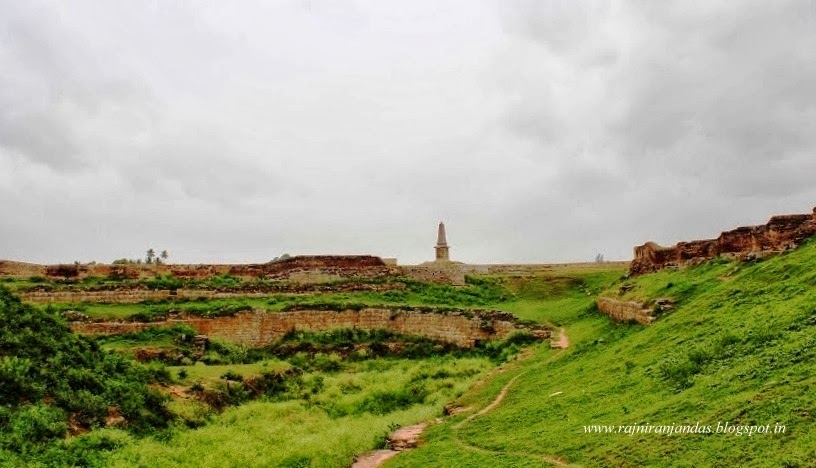
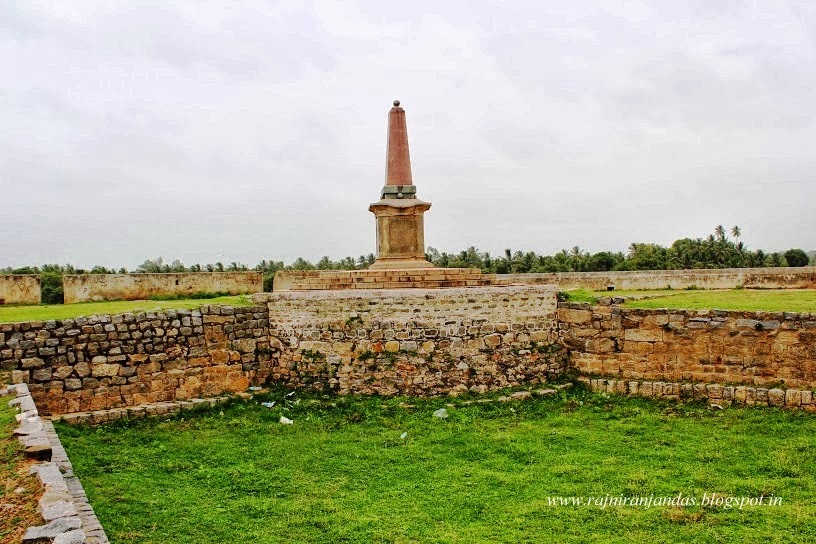 |
| The Obelisk |
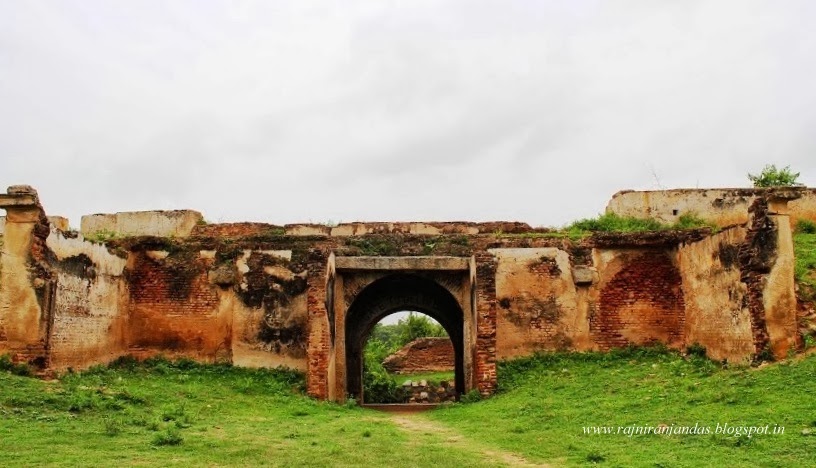 |
| Delhi gate |
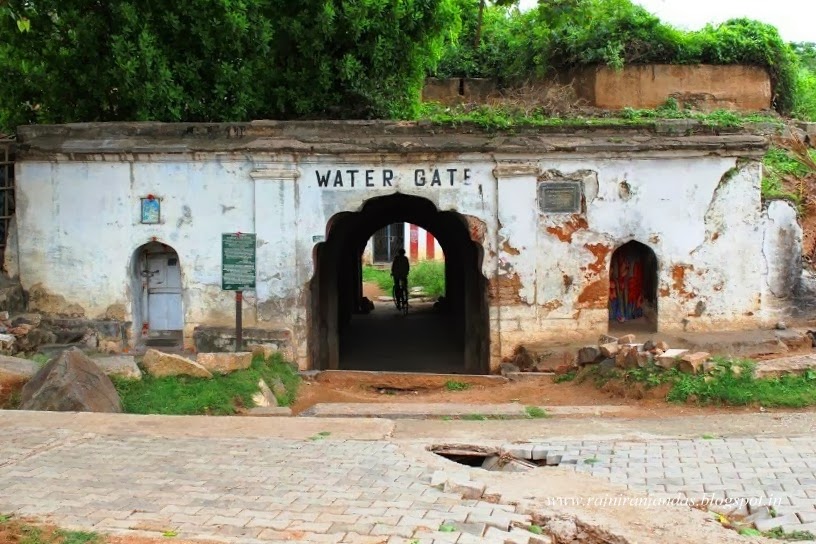
I then rode my way back to Bangalore gate after circumnavigation of the fort and my last place of visit was Jama masjid, soaked in turmeric yellow. I so wish the mosque was painted in white, which would have given it a lot of elegance. However, the beautiful architecture with tall minarets somewhat made up for the weird colour sense. As I walked in, it was a delight to see a number of young children trod in for their Islamic studies since the masjid doubles up as a madrasa. It was so calm and peaceful inside, and the only sound that disturbed was the cooing of the many doves that happily nestled inside the minarets. It doesn't come as a surprise why Tipu offered him namaaz at this beautiful mosque.
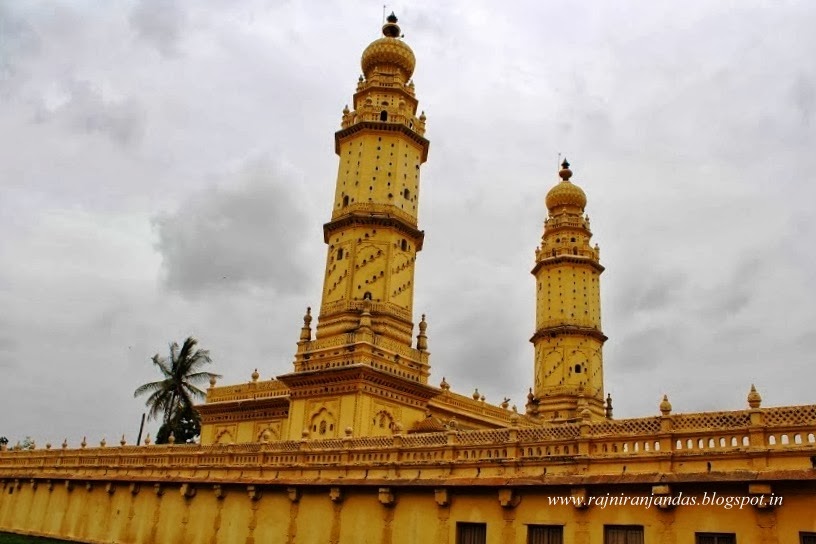 |
| Jamia Masjid |
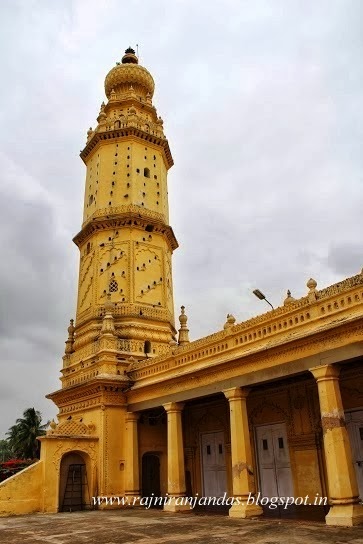
Across the highway, the first place of stop was Daria Daulat Bagh, the summer palace of Tipu Sultan. Built in 1784, this palace is now preserved as a museum amidst sprawling greenery. Built on a raised platform, it has open corridors and wooden pillars.The palace extensively displays beautiful intricate murals depicting victories in war, scenes from Sulthan's noble court and various portraits. It also houses a list of Tipu's memorabilia, historical data, European paintings and Persian manuscripts. The palace definitely gives a thorough insight into the life of Tipu Sultan, the various wars fought and the fall of Srirangapatna.
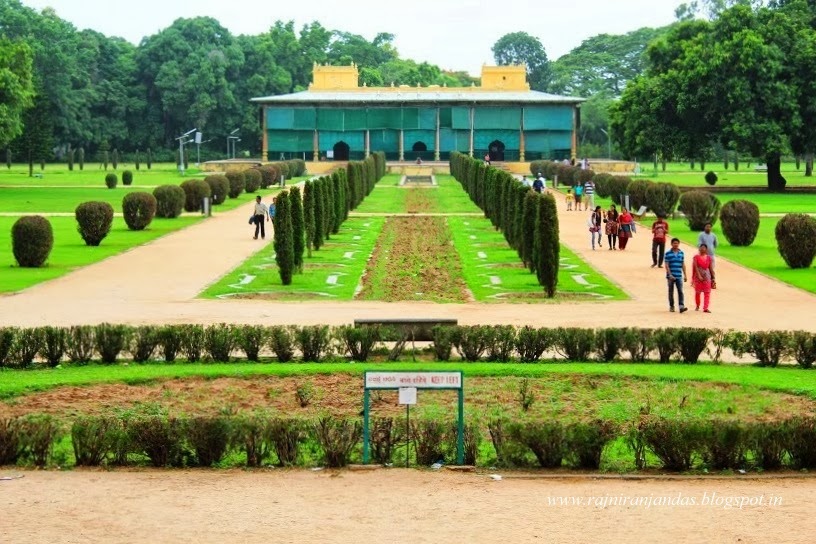 |
| Daria Daulat Bagh |
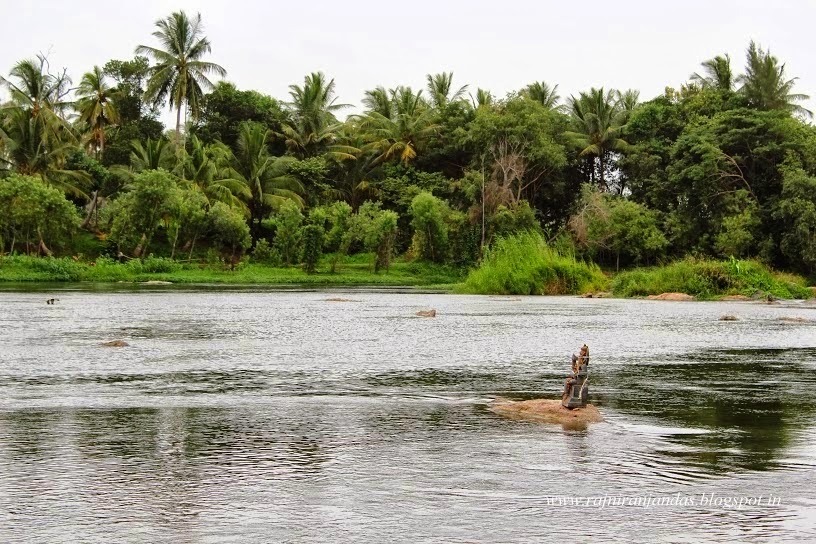 |
| Ghosai ghat |
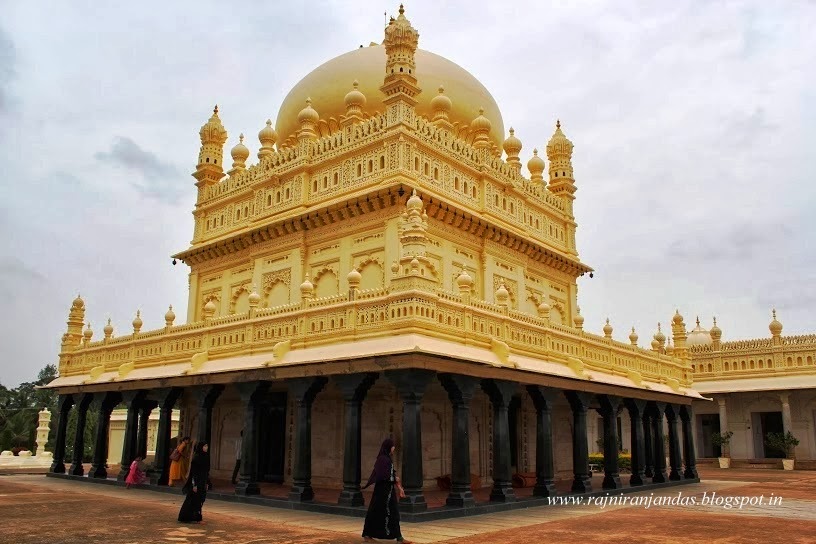 |
| Gumbaz |
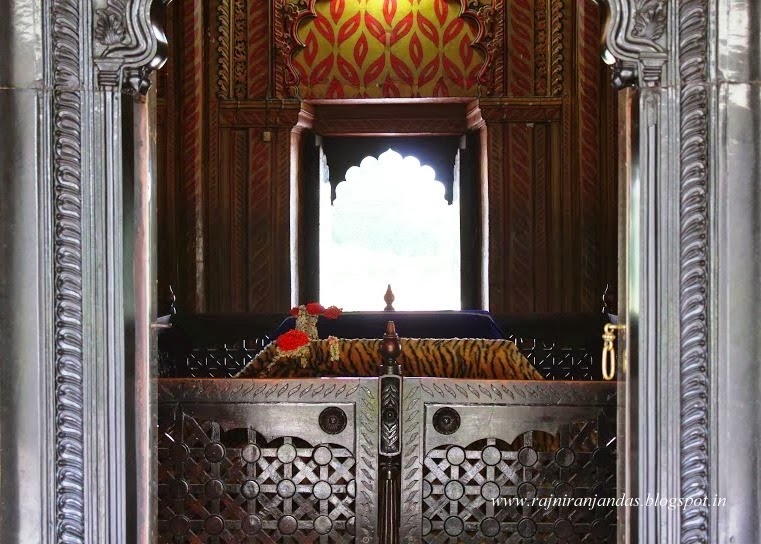 |
| The tombs inside the chamber |
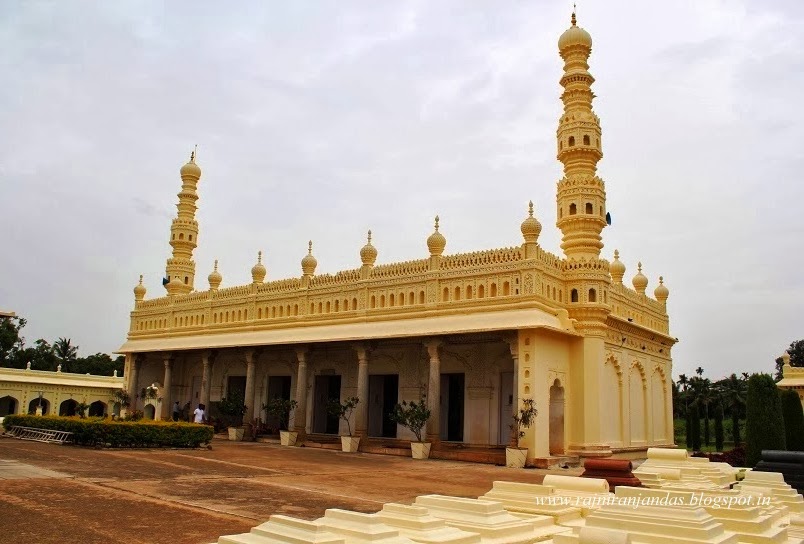 |
| Masjid-E-Aksa |
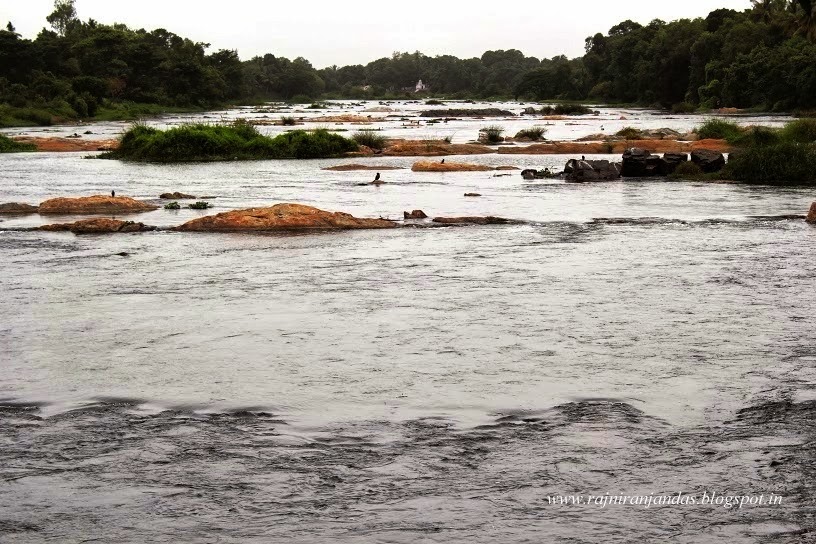 |
| The flowing Cauvery |
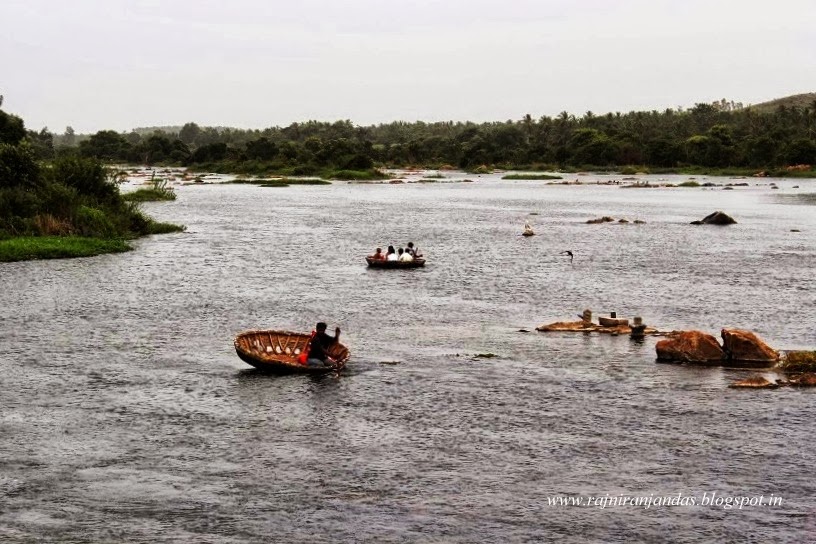 |
| Sangam |
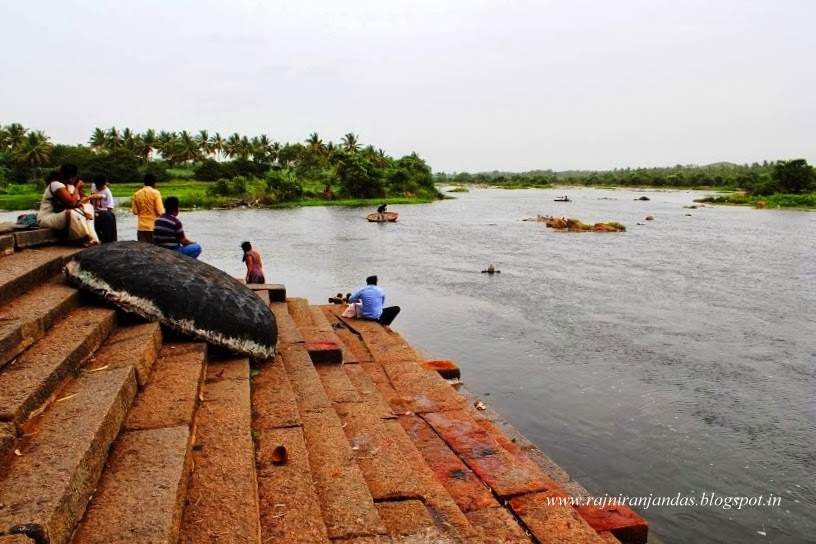
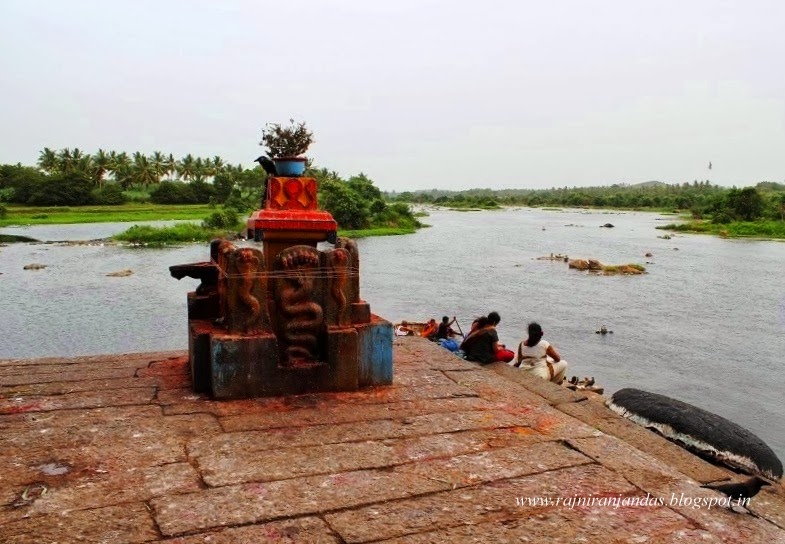
After a few solitude moments at the Sangam, gazing at the serene landscape, I rode back to Bengaluru. For a moment I stopped by to capture the age old stone pillared Wellesley's bridge, which connects Srirangapatna to the mainland. It still stands strong over the Cauvery even after heavy floods over the last couple of centuries and helps people travel from the chaotic world to the world of a bygone era.
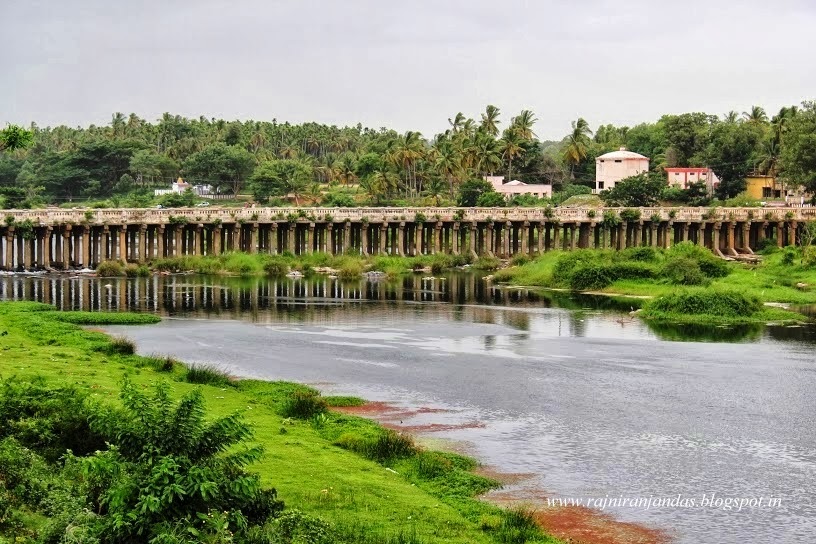 |
| Wellesley's bridge |
Signing Note- Soak in the quaintness of this river island as you enrich your historical knowledge...!!
Route- Bengaluru- Ramnagara- Maddur- Mandya- Srirangapatna
Distance- 125 Kms






acidity problem solution in hindi
ReplyDelete